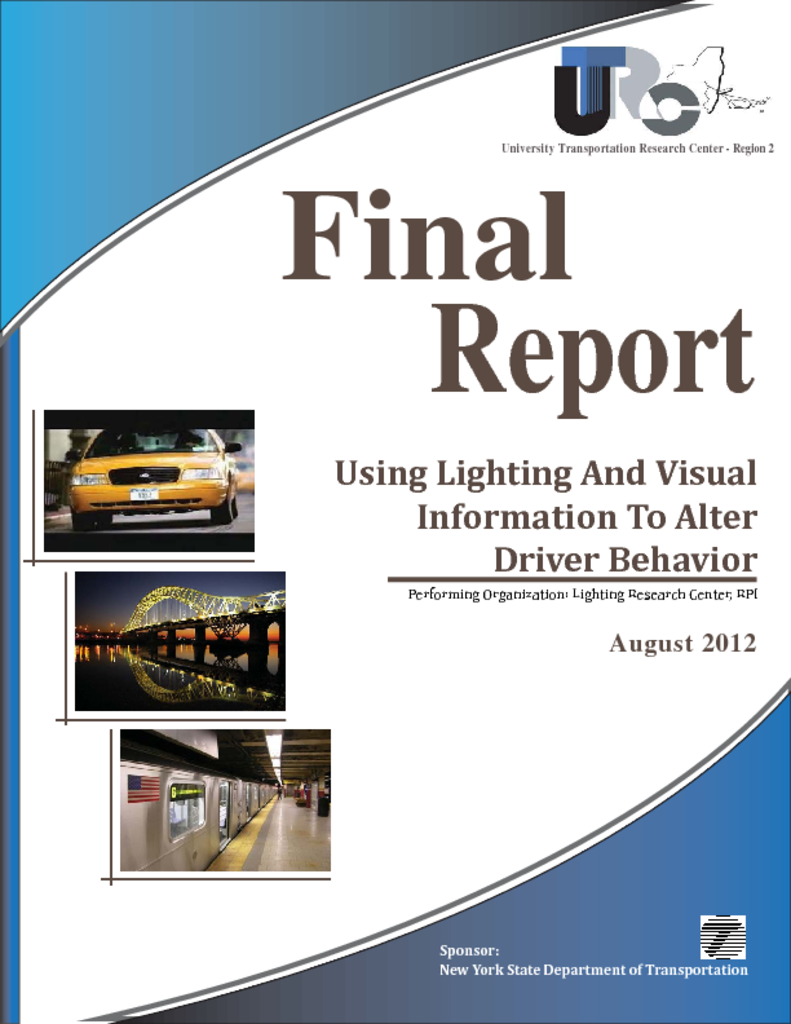Inappropriate traffic speeds are a major cause of traffic fatalities. Since driving is a task with a substantial contribution from vision, the use of lighting and visual information such as signage could assist in providing appropriate cues to encourage appropriate driving speeds. At locations such as sharp roadway curves, an overall reduction in driving speed might be desirable to prevent rollover crashes. At other locations, such as those prone to chronic congestion (exit/entrance ramps, work zones and where posted speed limits change), uniformity of vehicle speeds might be desirable in order to optimize safety and traffic flow. For roadway curves, a method of modifying the size and spacing of traditional chevron signs along a curve was used to convey the perception of increased curvature sharpness. This treatment was field tested in a controlled driving experiment, and then tested in a real-world installation along two highway curves in New York State. Based on the real-world test results, when the perception of curvature sharpness was increased, vehicle speeds were reduced enough to show a statistically significant change. To address the issue of reducing speed variance at congested locations, conditional speed display messages were displayed on a changeable message board based on the speed of oncoming traffic. Under a controlled field experiment, it was found to have the desired impact in terms of driving speed. In a real-world test installation, drivers modified their speeds which reduced speed variance in response to a similar conditional speed display sign. The results of the research project suggest that chevron size and spacing modifications can be readily implemented. Additional limited trials at different types of congested locations should be performed to better understand the impact of conditional speed displays; however, the present results of this research project are promising.


